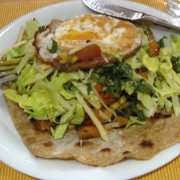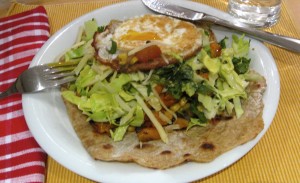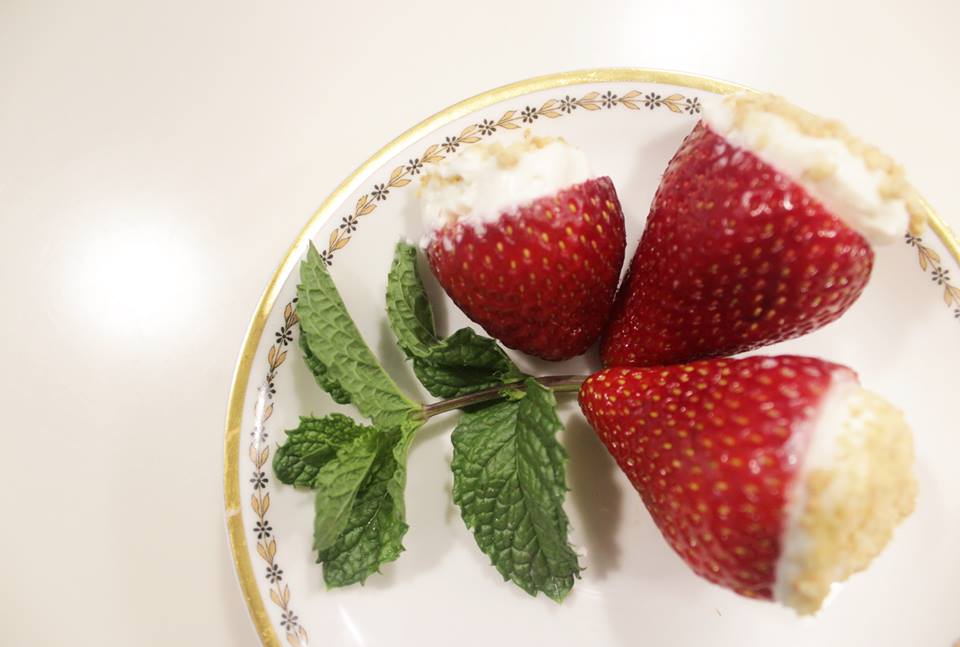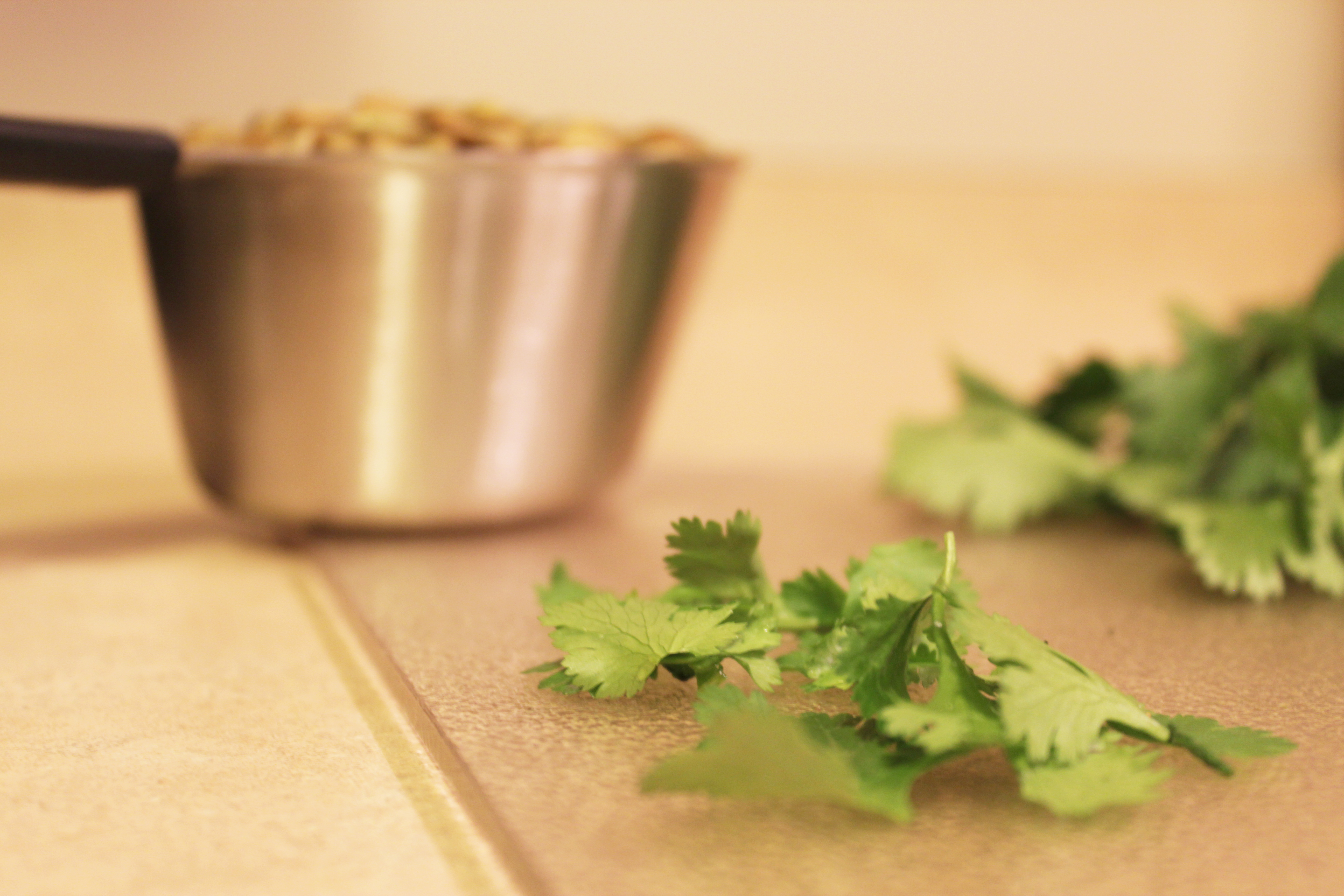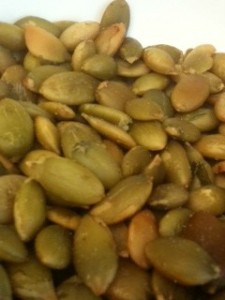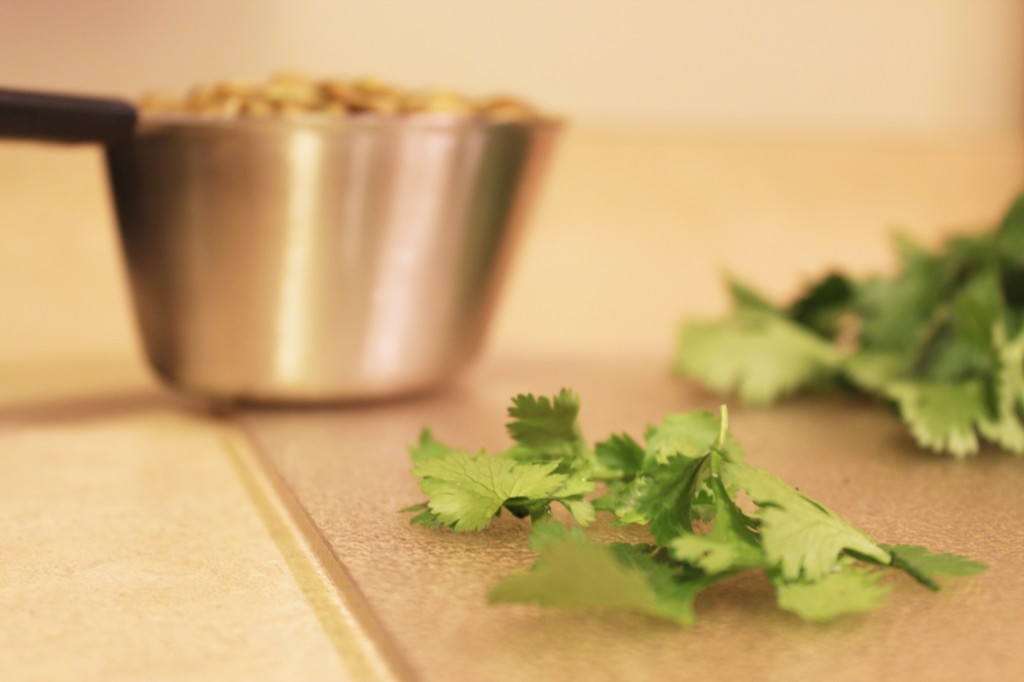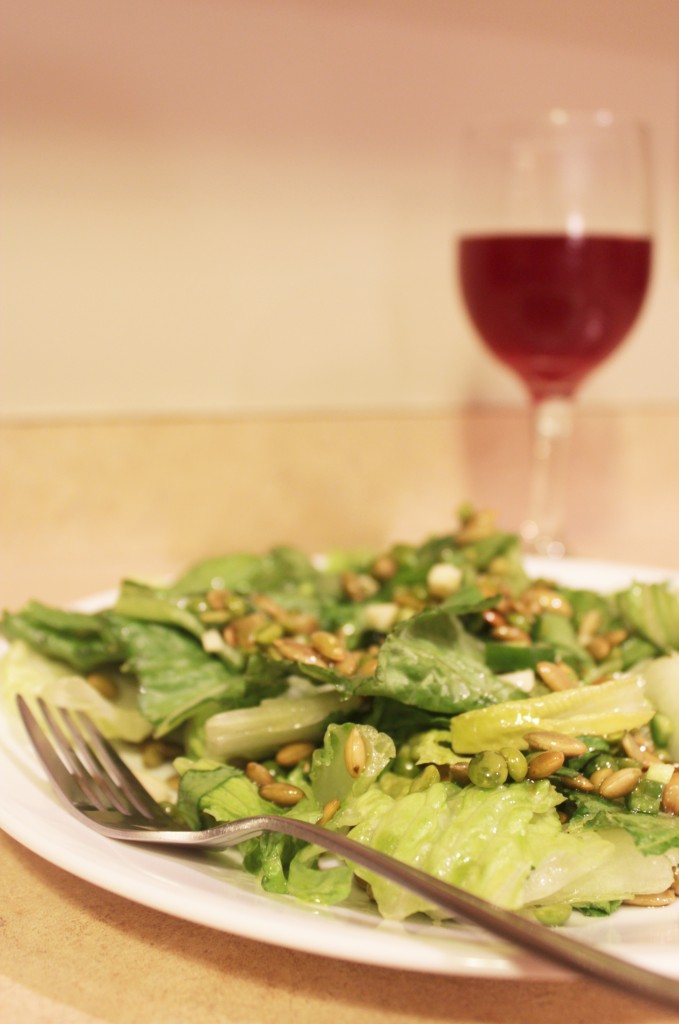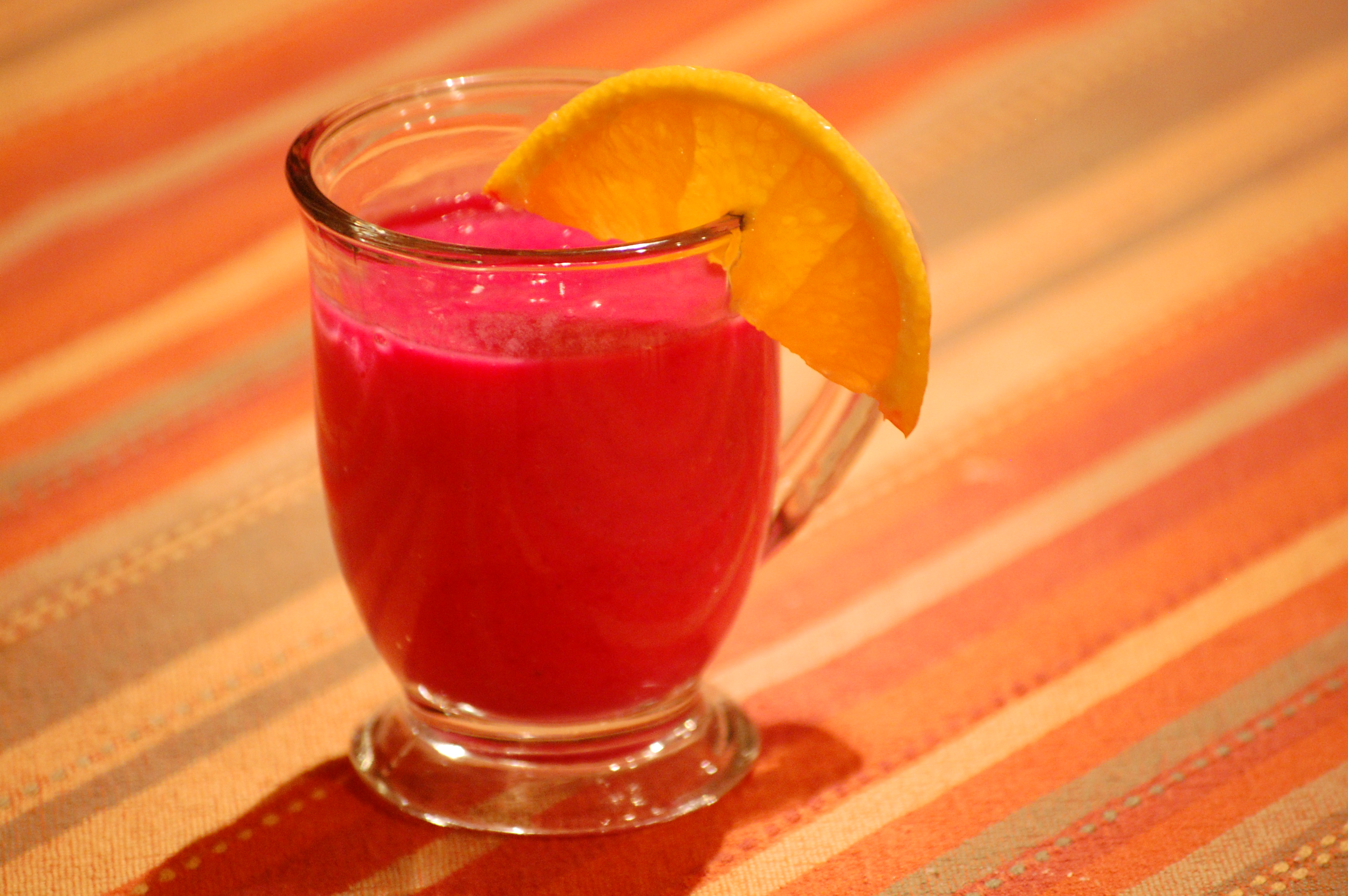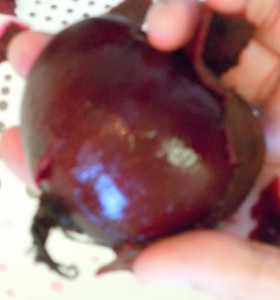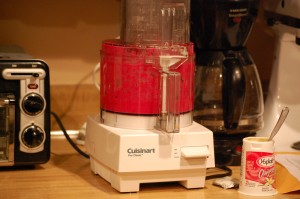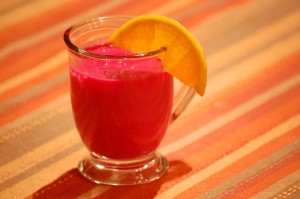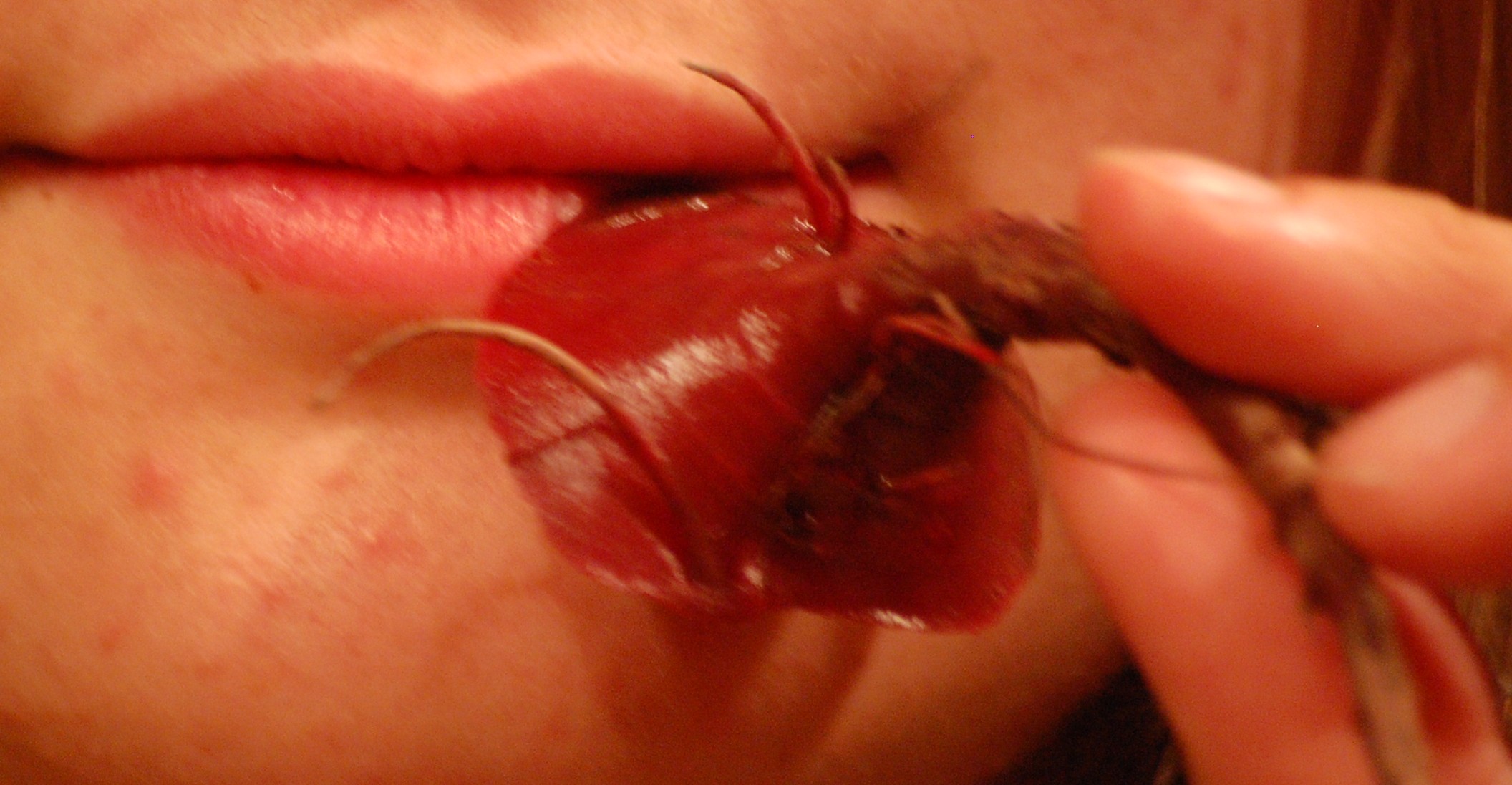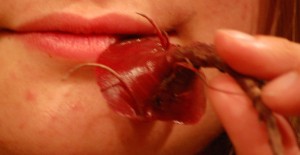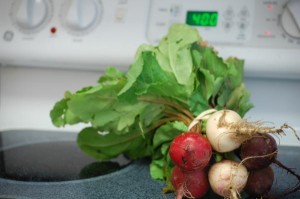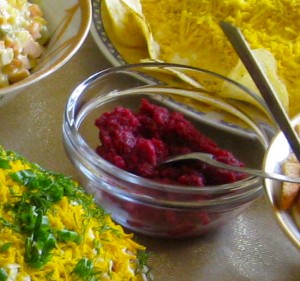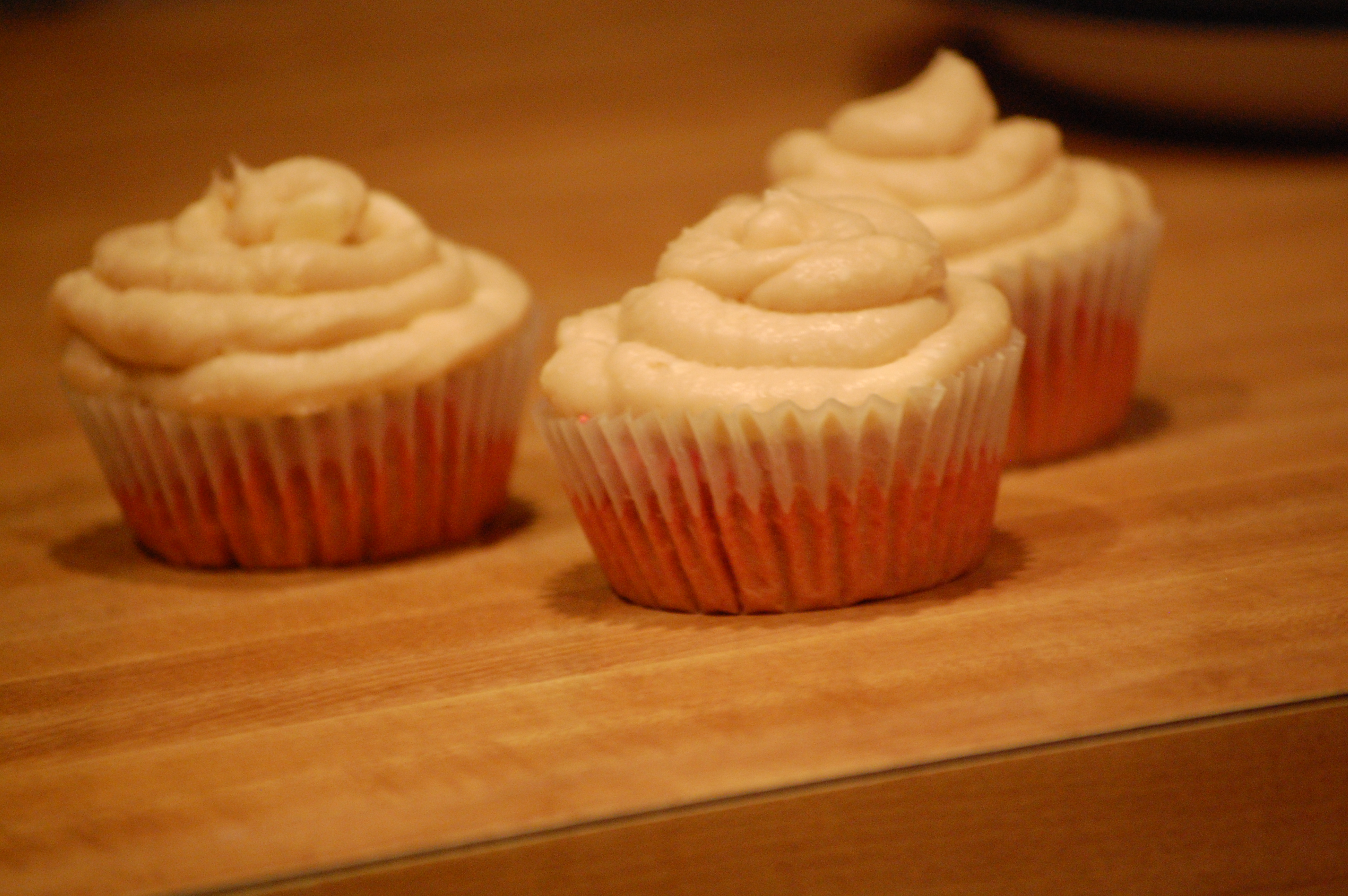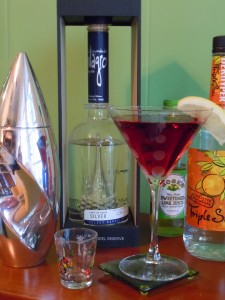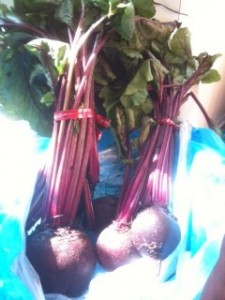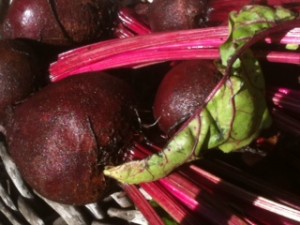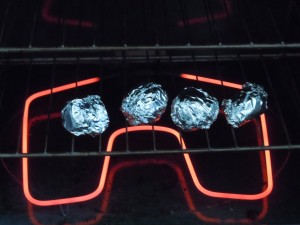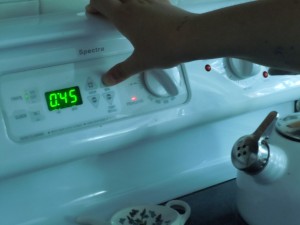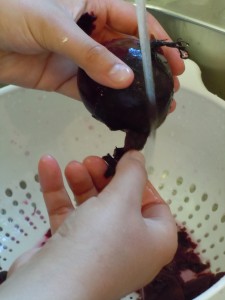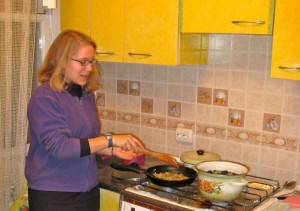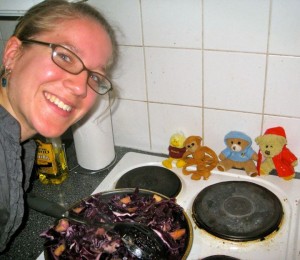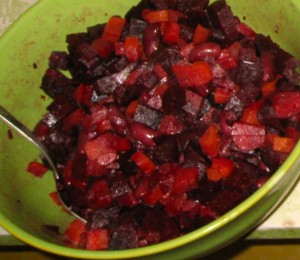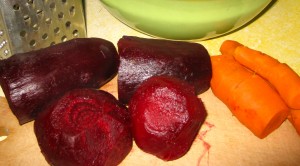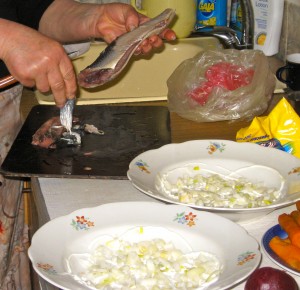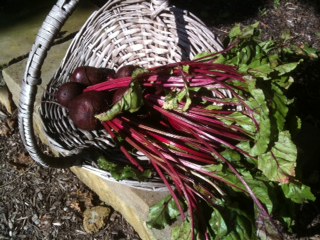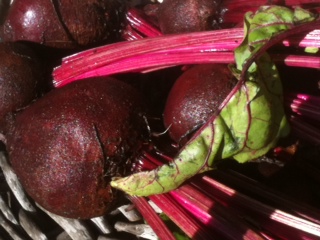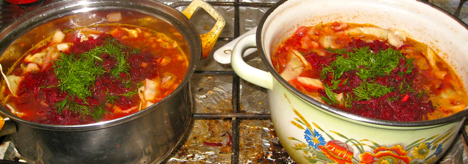If You Can’t Stand the Beet, Get Out of the Kitchen
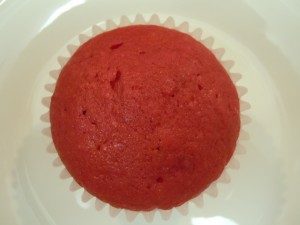
I know what you’re thinking…beet cupcakes?! Sounds pretty crazy, huh? For a beet hater like myself, I’ll openly admit to my skepticism. To me, beets are sickeningly sweet, but when they’re baked into pretty little treats, they can actually taste amazing!
You’ve probably passed beets in the supermarket without giving them the time of day and I can’t really blame you, but what you might not know is that beets are actually an incredibly healthy food – super foods in their own right. Joining garlic, green tea and flaxseed, beets can help prevent cancer. They have no trans fat, no saturated fat, are low in calories, and are a great source of iron.
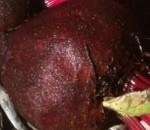 The perfect beet is hard to come by; it should be deep red with roots extending from the bulb. Crisp greens are also a good indicator that your beets are fresh. You’re going to cut these off for your cupcakes (trust me, I tried it, they’re disgusting in cupcake batter and frosting batter.)
The perfect beet is hard to come by; it should be deep red with roots extending from the bulb. Crisp greens are also a good indicator that your beets are fresh. You’re going to cut these off for your cupcakes (trust me, I tried it, they’re disgusting in cupcake batter and frosting batter.)
Follow the steps to make beet puree from the beet margarita recipe (Beet Week Day 3). In a nutshell, you’ll be roasting 3-4 beets wrapped in foil at 400 degrees for about 45 minutes. Unwrap, run under cold water and peel the skins off…they come off extremely easily.
Cut the beets into quarters (maybe smaller depending on the size of your beets), and put them in the food processor or blender.
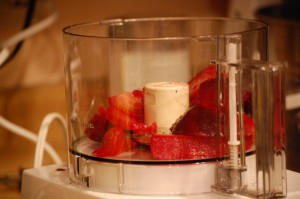
3-4 beets will yield about a cup of beet puree. Set this aside.
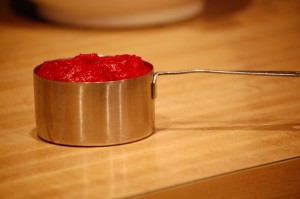
Here’s your Beet Cupcake Recipe:
½ C Sugar
1 ½ C Flour
2 tsp Baking Powder
½ C Butter (1 stick)
2 eggs
½ C Milk
2 tsp Vanilla
1 C Beet Puree
Depending on how big your cupcake pan is, this recipe creates about 12 cupcakes.
First, combine the dry ingredients in a bowl (sugar, flour, baking powder). Cream the butter in a mixer; if you don’t have access to a mixer, soften the butter in the microwave for 10 seconds and use a spoon to soften it up for your cake batter.
Whisk your eggs in a separate bowl and add the milk and vanilla to it. Slowly add the dry mix to the wet mix and stir continually.
Once your batter is nice and creamy, fold (mix) in the beet puree.
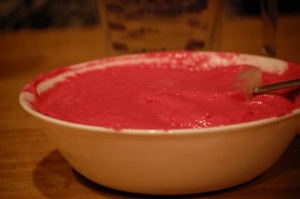
Use a ladle or spoon to portion your batter into your cupcake pan and bake at 350 for 25 minutes.
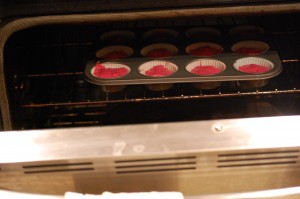
And remember, a cupcake is nothing without frosting.
Vanilla Cream Cheese Frosting recipe:
½ C Butter (1 stick)
8 oz Cream Cheese (1 package)
1 C Powdered Sugar
2 tsp Vanilla
Cream the butter and cream cheese together in a mixer until malleable. Add the powdered sugar in SLOWLY; you don’t want it to splash back in your face. Finally, add in the vanilla and let the mixer go for 30 seconds or so. It sometimes helps if you take a rubber spatula and scrape down the sides so all of the deliciousness is contained.
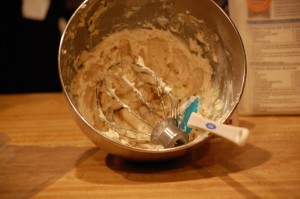
I realize not everyone has pastry bags to pipe out their frosting (I’m lucky; my mom’s a chef!) Be resourceful though…plastic freezer bags can act as pastry bags. Put the icing in the bag using a rubber spatula.
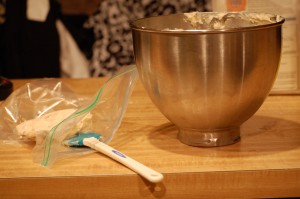
Zip the plastic bag shut and squeeze the frosting down to one end. Hold the bag in a diamond shape so one of the tips is pointing down like this:
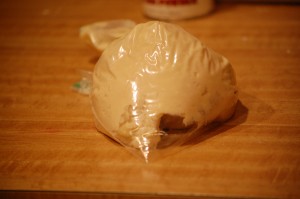
…and snip the tip off! Once your cupcakes are cooled, you can make them look pretty.
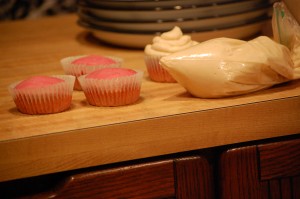
I bought all of my beets from local farmer’s markets. You might have one near you too! If you’ve never been to a farmer’s market, it’s a really cool place where you can buy fresh fruit, vegetables, and other goods to support your local farms. As an added bonus, the produce is usually much cheaper and fresher at farmer’s markets. In Cleveland, (as in other places – see below* for a sampling) you can find them listed on one site: localfoodcleveland.org.
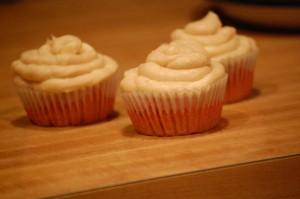
Enjoy your beet cupcakes! Please comment with pictures of your own cupcakes or other beet concoctions (:
-Rebecca-
*Many states, regions and cities have sites listing farmers markets- here are a few examples.
California
New York City
Chicago
Denver
Minneapolis/St. Paul

ps – during our experimentation with different recipes, we also tried these cupcakes with a canned chocolate frosting. We found this to be a respectable (and tasty) alternative.

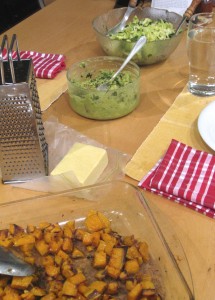 In the mood for a quick dinner? How about the ever-adaptable tacos? You only need a handful of ingredients, some of which you probably already have in the fridge or pantry, and about 30 minutes to whip up a tasty meal. Below, we provide you with our favorite vegetarian tacos, with sweet potato and a fried egg bulking things up in the absence of meat. Follow our guide to create some great tacos tonight:
In the mood for a quick dinner? How about the ever-adaptable tacos? You only need a handful of ingredients, some of which you probably already have in the fridge or pantry, and about 30 minutes to whip up a tasty meal. Below, we provide you with our favorite vegetarian tacos, with sweet potato and a fried egg bulking things up in the absence of meat. Follow our guide to create some great tacos tonight:
